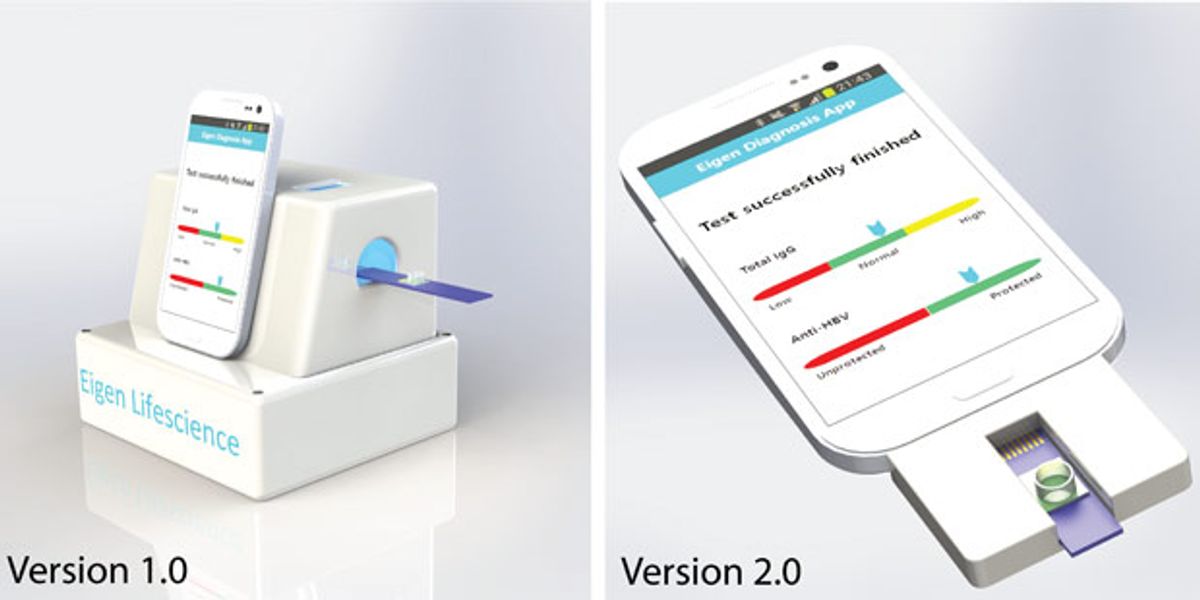Today’s home medicine kit is fairly limited when it comes to diagnostics: You can take your temperature, check your blood pressure, and give yourself a home pregnancy test, but that’s about it. The Nokia Sensing XChallenge (from the XPrize folks) aims to improve that situation by spurring inventors to create portable gadgets that consumers can use to collect accurate, real-time health information. The 11 finalist teams, announced today, are building gadgets that do lab tests, monitor heart disease, check vital signs, and more.
The Sensing XChallenge is distinct from a very similar competition, the Qualcomm Tricorder XPrize, in which teams are vying to create a universal diagnostic tool along the lines of the handheld tool wielded by Star Trek’s Dr. McCoy. In the Tricorder contest, the devices are required to diagnose a specific list of 15 ailments, whereas in the sensing challenge the tools can be designed to do just about anything.
However, the XPrize doesn’t see redundancy here, but rather a symbiotic relationship, says Grant Campany, senior director of the sensing challenge. The Nokia contest is intended to reward teams for developing technologies that could be incorporated into a Tricorder device, he told IEEE Spectrum in an email. Several sensing teams are validating technologies for collaborating Tricorder teams, Campany says, which are racing to build at least 30 working Tricorder devices for consumer testing next year.
The Nokia contest’s judges will have some apples vs. oranges decisions to make, because the 11 finalists’ gadgets are designed for a wide variety of applications. How do you compare a handheld spectrometer, which can detect biomarkers of liver function in a drop of blood, to a pressure sensor implanted in the pulmonary artery of a heart disease patient? Other devices include a wearable sensor to detect sleep apnea, a mobile phone-based imaging app to find symptoms of eye disease, and a variety of mobile lab gadgets. Which among these is the most meritorious, and therefore worthy of the $525,000 grand prize?
Campany says the judges have a list of criteria that include technical innovation, reliability, ease of use, and relevance to a public health need. He also notes that crowd voting accounts for 10 percent of the teams’ scores; you can cast your vote for the winner through the end of the month. The winning team will be announced in November at the Exponential Medicine conference.
Eliza Strickland is a senior editor at IEEE Spectrum, where she covers AI, biomedical engineering, and other topics. She holds a master’s degree in journalism from Columbia University.



